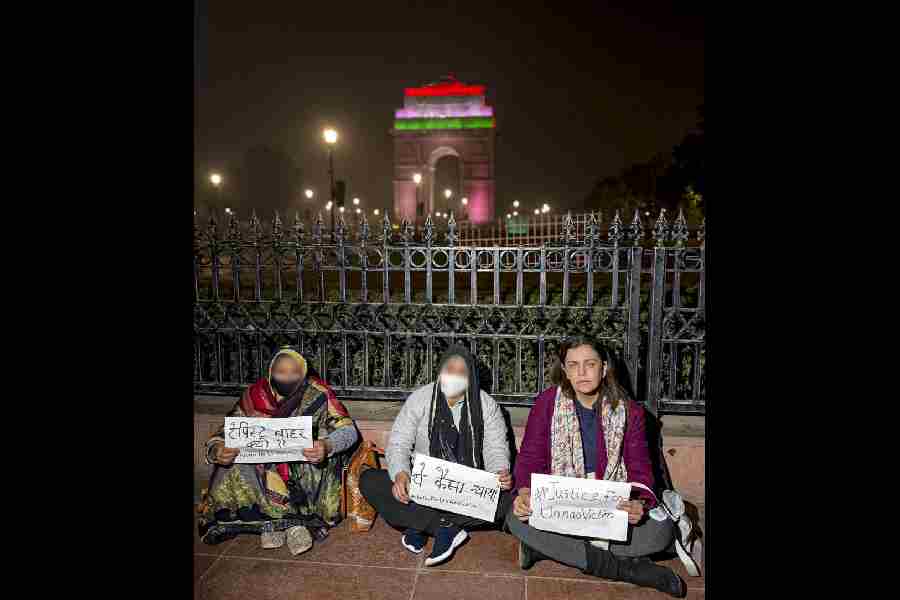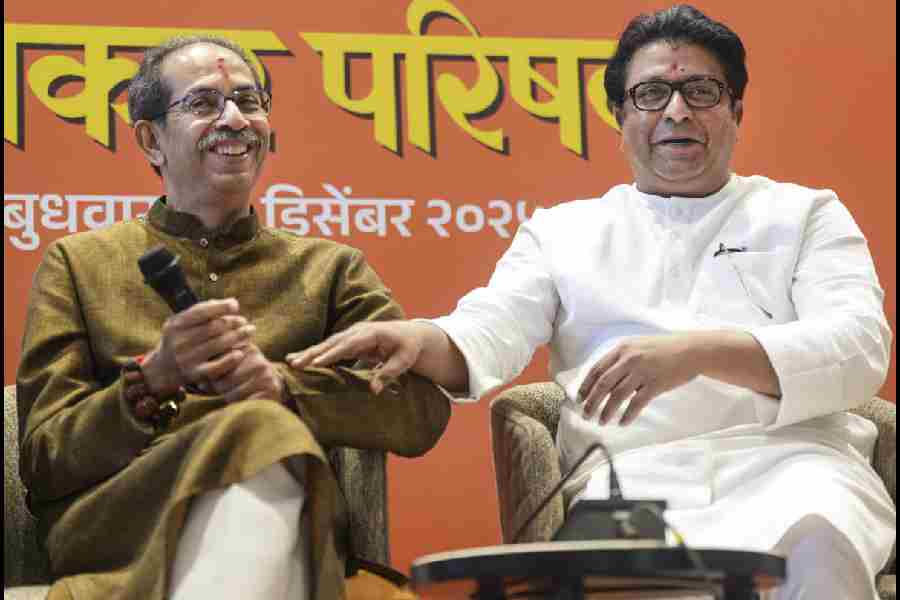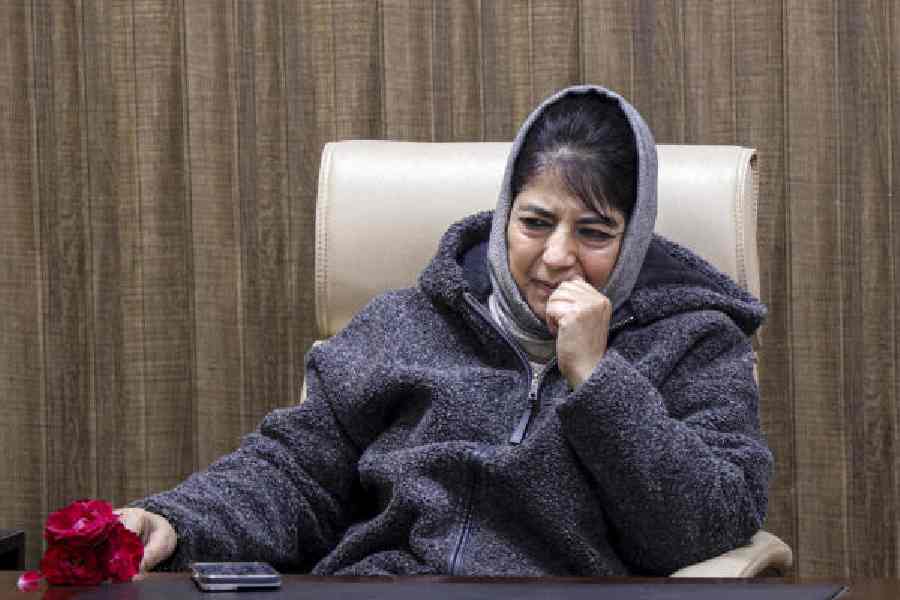 |
 |
| Devotees dressed as tigers spread awareness about saving the wild cats during Thakurani Jatra in Berhampur. Pictures by Gopal Krishna Reddy |
Berhampur, April 25: Silk city’s month-long festival of Buddhi Thakurani, popularly known as Thakurani Jatra, which concluded today, presented various ways of appeasing the goddess. Among these, the traditional bagha nacha or tiger dance stood out as the main attraction and the performers found a large fan following.
While touring the city, each bagha nacha performer is usually accompanied by friends, well-wishers and a minimum of four to six persons beating dhampa drums. According to legend, Budhi Thakurani rides the tiger and by dressing up as the striped animal, one secures divine blessings.
Incidentally, the devotee, who dons the role of this carnivore, follows a strict vegetarian diet for at least a fortnight before his act and fasts on the day of the performance.
The date of performance for each individual is selected well in advance. Earlier, the performers used to dance throughout the night in different parts of the city. But the city police do not allow these performances to be held between 11pm and 5am.
The performer undergoes regular dance practice sessions for a minimum of two to four weeks under the guidance of a guru. The necessary rituals are carried out by his family members. On the day of the performance, he visits the temple of the goddess.
Usually, it takes around three-and-a-half hours to paint the tiger stripes on a performer and this costs more than Rs 2,000.
“At least two people are engaged in the painting. During one season, we paint as many as 200 men as tigers,” said Raj Kumar, who has been in this business for the last 12 years.
He learnt the techniques of painting from his father Hadubandhu Behera, a resident of Chandramanipeta Sahi here.
“My father and I have formed a group of 12 people who are in charge of painting people in bagha besha during Thakurani Jatra. The dancer’s entire body is shaved and we start painting early in the morning. In the afternoon, the dancer’s headgear and tail are taken to the jatra mandap for puja. As dusk falls, he gets into his act, dancing on the city streets followed by the drummers,” Raj Kumar, the 25-year-old artist said.
Thakurani Jatra involves danda or votive pledge, in which devotees enact as mythological figures for their wishes to be fulfilled by the goddess. “Most youths dress up as tigers to appease the goddess and get their wishes fulfilled,” said Badri Narayan Nayak, general secretary of Zilla Congress, who did bagha nacha during the Thakurani Jatra in 1993.
“I prayed to Thankurani for better fortune and post my performance, I experienced several positive changes which reinforced my belief in the goddess,” Badri said.
At present, the cost of bagha besha, hiring drummers and other things comes to nearly Rs 7,000.
“The donation which one receives from the houses he visits during the city tour is spent on offerings to the goddess and the bhog is distributed among friends and relatives,” added Badri.
“The costumes, dancing postures and the dhampa tune do not resemble any classical dance form. Efforts should be made to conserve this age-old tradition,” said Pradeep Mahapatra, reader in journalism and mass communication at Berhampur University.










